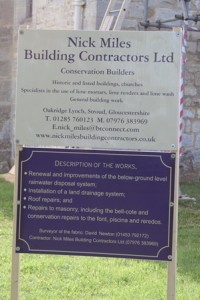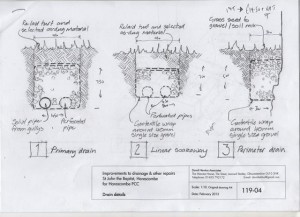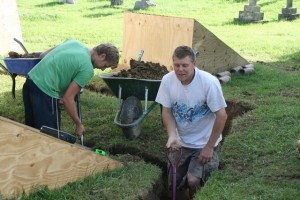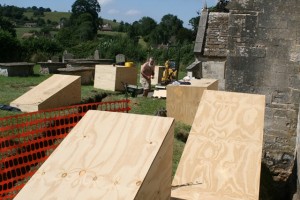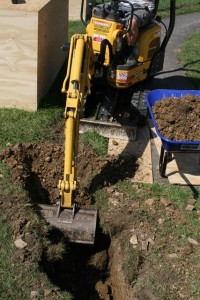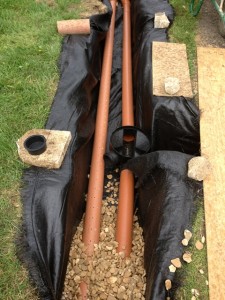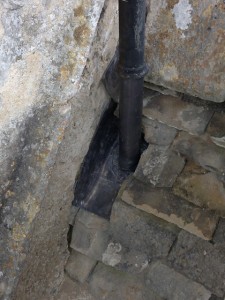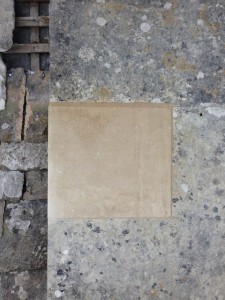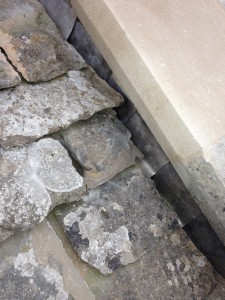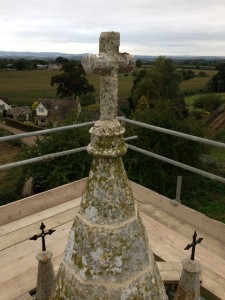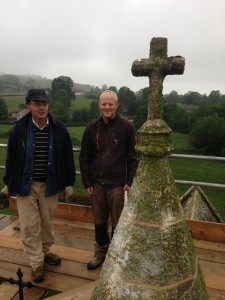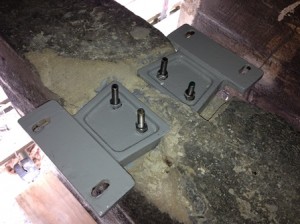We are in the process of carrying out some careful excavations in the churchyard; this excavation work has been subject to a full archaeological watching brief by Absolute Archaeology (www.absolutearchaeology.co.uk) and to date our finds include some possible Saxon floor tiles, potential evidence of a previous building under the chancel and some fragments of human bones (which is only to be expected!)
The excavation work is necessary as part of the installation of new land drains and the refurbishment of the rainwater disposal system. The church has suffered the effects of dampness due to excessive ground water and also high outside ground levels for many years and the drainage work is aimed at moving more of the ground and surface water away from the building. Other conservation works are also being carried out at the church including consolidation of sensitive and friable surfaces using the latest nano-lime technology. The work is being carried out under the watchful eye of David Newton in his capacity as the surveyor of the fabric.
The abutments have been stripped out and new lead soakers installed. A lime mortar fillet will be applied over this detail. Lime mortar repairs/repoint to open joints of the bell-cote. NHL5 was used for these repairs due to the exposed nature of these elements.
Minor pointing and some micro-pin repairs (using 3mm diameter stainless-steel bar) were needed to the cross. The dove-tail shaped, cast-iron bell supports (4 No. in total) have been carefully removed, re-painted using a high-performance paint system and reset using 12mm stainless-steel threaded bar set in epoxy-resin. The bells have been temporarily removed by Whites of Appleton in order that the mechanism can be cleaned, repaired and refitted. One of the bells is reputed to date from around 1180 making it the oldest bell in Gloucestershire!
The next phase of work includes conservation repairs to: the Norman font (the thing that babies are dunked in), the piscina (the thing that’s used for washing the communion vessels and nothing else!) and the stone reredos (the ornate feature on the east wall behind the alter which can be stone or wood and usually depicts a religious scene of some form or other).
We will be using nano-lime for the consolidation of friable surfaces along with stainless-steel micro-pins and conservation mortar repairs where necessary. We will be using highly acclaimed conservation specialist Mark Hancock (www.centrelinestone.co.uk) for this work.
More details to follow.
